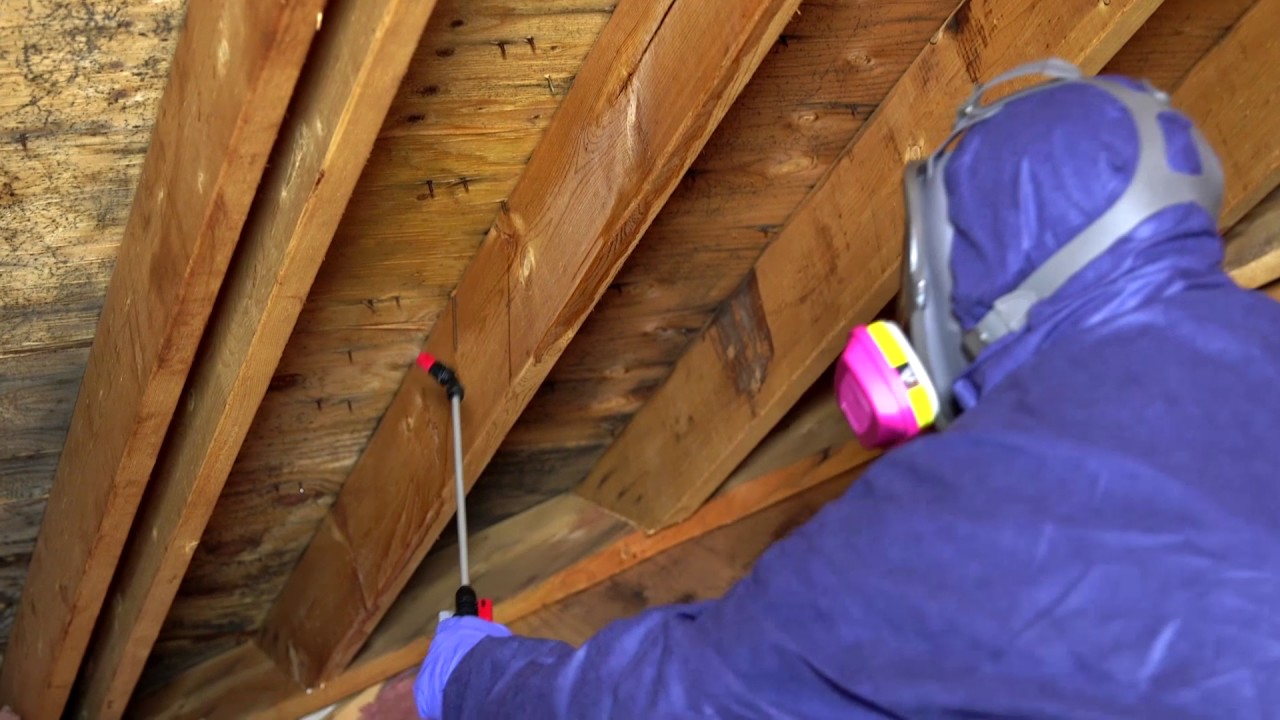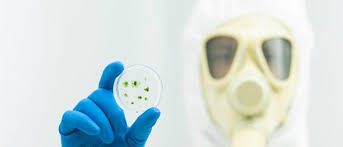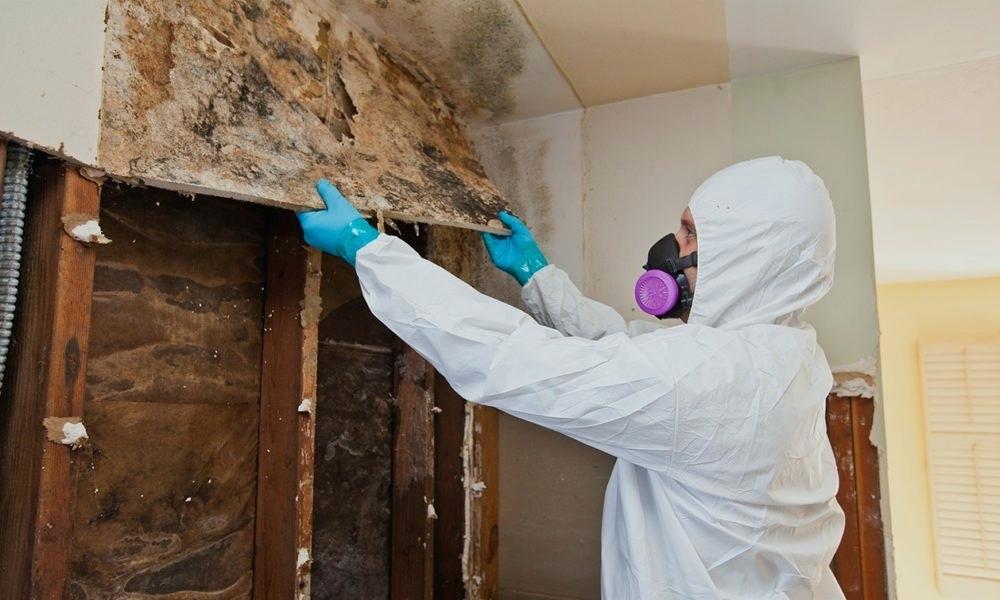Say Bye To Mold
Typically, when you find a substantial amount of mold and excess moisture, it’s best to dry out the area around it and seal it off since the fungus can readily travel if disturbed.
TL;DR
Mold is pretty much everywhere as its spores can easily be spread and survive on various different surfaces, growing anywhere there is moisture. Thankfully, there are a couple ways to get rid of this pervasive fungus. After learning why mold is so frustrating and harmful, you will learn how to eradicate it from your living space.
Is mold common?
Mold is the non-scientific term used to refer to an undesirable growth of fungus. It can occur on a variety of surfaces, from food to gypsum wallpaper (drywall) or books. You can find tons of mold species both indoors and outdoors. Mold spreads by means of spores, which can be dispersed by the air and then survive on essentially anything. These spores can lay dormant for a while during dry conditions but start actively growing when moisture is present. Since mold is a type of fungus, the two terms will be used interchangeably in this article.

This may come as a surprise but mold spores are pretty much everywhere. There are hundreds of different kinds of mold out there and they can grow essentially wherever excessive moisture is present. Examples include carpets, attics, drywalls, ceiling tiles, and even fabrics like your clothes. Actively-growing mold can damage whatever surface it's on, destroying the material's structural integrity. This is why it is imperative that any occurrences of mold found in a building is remediated sooner rather than later. Let's say that you spot an extreme case of mold on your office's ceiling or wall. Removing this threat earlier could help prevent the ceiling or wall from decaying any further and even from falling in altogether.
What are the dangers?
Unfortunately, beyond causing structural damage, mold has also been found to have solid but uncorroborated links to health issues such as infections and allergies. Many people have experienced untoward health effectsafter staying in an area contaminated with this fungus or at least in an area marked by excessive dampness. They can suffer from coughing, respiratory infections, wheezing, and runny nose, among other conditions. Mold can also exacerbate the current health problems that one may be facing such as asthma or allergies. However, since the connection between mold and these ailments has not been clearly proven, experts are not sure if the problems can be directly attributed to mold or to the bacteria and dust mites that can be found in mold-colonized environments.
Mold Remediation by Contamination Level
Since dampness and, subsequently, mold exposures are quite prevalent in buildings, it would be very beneficial to know how to get rid of them. It is believed that between 18% to 50% of buildings have these unsuitable environmental conditions so it's much more common than you'd think. There are several things to keep in mind when trying to remediate the contamination. When cleaning small amounts of mold such as 10 sq ft or less (referred to as Level 1 by the New York City Department of Health), you can just do it yourself if you follow the proper procedures and wear the right equipment. For large areas of mold such as 30 to 100 sq ft or over 100 ft (referred to as Levels 3 and 4), you should seek professional help and further protection. The minimum personal protective equipment (PPE) that you should wear includes eye protection (goggles without vents), rubber gloves that reach mid-forearm, and an N-95 respirator. You should also wear long-sleeved shirts and pants with covered shoes, especially waterproof boots in large decontamination projects. If working on a large area of mold, using disposable clothing is advised as you can simply dispose of the clothing afterwards, minimizing any further spreading of the mold.

Mold Remediation Step by Step
The following steps for mold remediation are derived from the "Mold Remediation in Schools and Commercial Buildings Guide" (also applies to offices and homes) created by the Environmental Protection Agency:
- Figure out and solve the water or humidity problem.
- Communicate with inhabitants and address any concerns.
- Clean up contaminated areas thoroughly with proper materials and PPE.

These directions are very general so for those of you looking for more in-depth instructions, click on over to our article on mold removal types where you can also find cleaning processes for specific situations. Typically, when you find a substantial amount of mold and excess moisture, it's best to dry out the area around it and seal it off since the fungus can readily travel if disturbed. HVAC systems are also common sites to find mold accumulation and they can easily blow and disperse the fungus. Therefore, it would be a good idea to check and clean them if they are close to any moldy areas. After remediation, you should check the treated area(s) to verify that there is no recurring water damage or mold regrowth.
The advantages of hiring mold remediation specialists present another attractive option. First and foremost, you do not have to do it yourself. Beyond that, you also do not have to buy your own gear and tools. With a professional coming in and working on your fungal situation, you know that everything will be handled very carefully and safely. Although this method is much more expensive, you won't have to work on over 10 square feet of mold and worry about making mistakes that may cause the mold to spread even further.
Summary
If you ever spot visible mold in your building, you could either try to take care of it yourself if the contamination is minimal or contact a mold professional for more serious instances. Don't worry about getting any pre-testing as that is typically a waste of money. Knowing that mold is present in your immediate surroundings is all the information you need since mold remediation is a pretty similar process no matter the type of strain. Testing may or may not be useful for those who may have contracted an associated illness through mold exposure but typically, it is not worth the investment. Besides, testing can be very expensive and quite difficult to interpret since there aren't any nationwide standards on mold testing, normal concentrations, reporting formats, or else. Even the CDC does not recommend doing regular tests for mold.
In the end, even with all the confusion on whether mold actually causes illnesses and how much mold is acceptable or not, it's a good idea to maintain a clear and dry indoor environment. For the sake of your health, quality of life, and even just for aesthetic reasons, mold should be remediated as soon as safely possible. If you're going to use a professional, make sure to check their credibility and do your research beforehand.